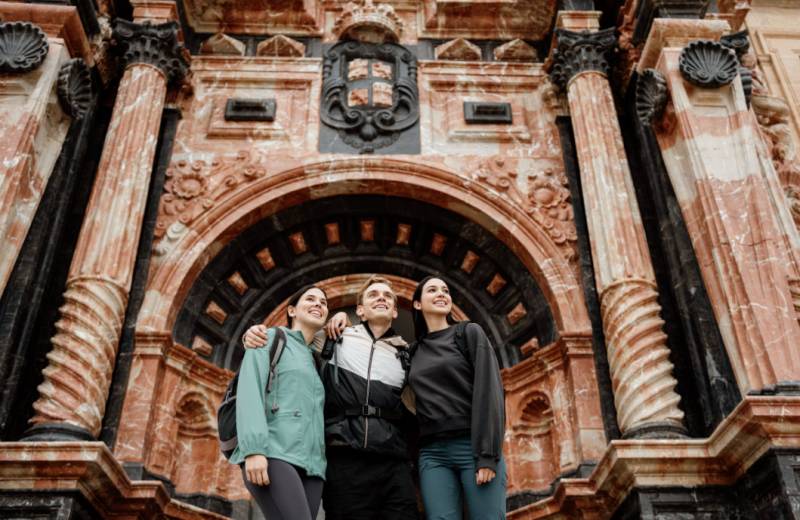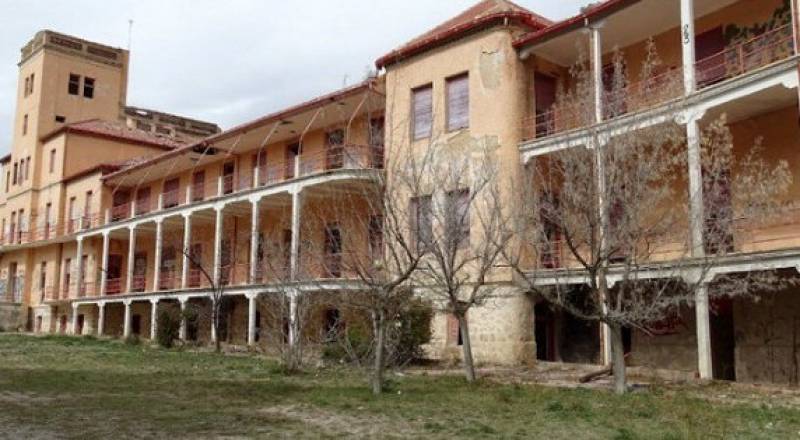- Region
- Águilas
- Alhama de Murcia
- Jumilla
- Lorca
- Los Alcázares
- Mazarrón
- San Javier
-
ALL AREAS & TOWNS
- AREAS
- SOUTH WEST
- MAR MENOR
- MURCIA CITY & CENTRAL
- NORTH & NORTH WEST
- TOWNS
- Abanilla
- Abarán
- Aguilas
- Alamillo
- Alcantarilla
- Aledo
- Alhama de Murcia
- Archena
- Balsicas
- Blanca
- Bolnuevo
- Bullas
- Cañadas del Romero
- Cabo de Palos
- Calasparra
- Camping Bolnuevo
- Campo De Ricote
- Camposol
- Canada De La Lena
- Caravaca de la Cruz
- Cartagena
- Cehegin
- Ceuti
- Cieza
- Condado de Alhama
- Corvera
- Costa Cálida
- Cuevas De Almanzora
- Cuevas de Reyllo
- El Carmoli
- El Mojon
- El Molino (Puerto Lumbreras)
- El Pareton / Cantareros
- El Raso
- El Valle Golf Resort
- Fortuna
- Fuente Alamo
- Hacienda del Alamo Golf Resort
- Hacienda Riquelme Golf Resort
- Isla Plana
- Islas Menores & Mar de Cristal
- Jumilla
- La Azohia
- La Charca
- La Manga Club
- La Manga del Mar Menor
- La Pinilla
- La Puebla
- La Torre
- La Torre Golf Resort
- La Unión
- Las Palas
- Las Ramblas
- Las Ramblas Golf
- Las Torres de Cotillas
- Leiva
- Librilla
- Lo Pagan
- Lo Santiago
- Lorca
- Lorquí
- Los Alcázares
- Los Balcones
- Los Belones
- Los Canovas
- Los Nietos
- Los Perez (Tallante)
- Los Urrutias
- Los Ventorrillos
- Mar De Cristal
- Mar Menor
- Mar Menor Golf Resort
- Mazarrón
- Mazarrón Country Club
- Molina de Segura
- Moratalla
- Mula
- Murcia City
- Murcia Property
- Pareton
- Peraleja Golf Resort
- Perin
- Pilar de la Horadada
- Pinar de Campoverde
- Pinoso
- Playa Honda
- Playa Honda / Playa Paraíso
- Pliego
- Portmán
- Pozo Estrecho
- Puerto de Mazarrón
- Puerto Lumbreras
- Puntas De Calnegre
- Region of Murcia
- Ricote
- Roda Golf Resort
- Roldan
- Roldan and Lo Ferro
- San Javier
- San Pedro del Pinatar
- Santiago de la Ribera
- Sierra Espuña
- Sucina
- Tallante
- Terrazas de la Torre Golf Resort
- Torre Pacheco
- Totana
- What's On Weekly Bulletin
- Yecla


- EDITIONS:
 Spanish News Today
Spanish News Today
 Alicante Today
Alicante Today
 Andalucia Today
Andalucia Today
article_detail
Date Published: 25/10/2011
La Riada de Santa Teresa (1879)
La Riada de Santa Teresa devastated Murcia
 Even though the event is now well beyond the reach of living memory, the flood known as the "Riada de Santa Teresa" is still the benchmark for all weather events in Murcia. The whole of the city was flooded, the village (now a residential suburb) of Nonduermas, just to the south of the city, was completely obliterated, and hundreds of Murcianos lost their lives.
Even though the event is now well beyond the reach of living memory, the flood known as the "Riada de Santa Teresa" is still the benchmark for all weather events in Murcia. The whole of the city was flooded, the village (now a residential suburb) of Nonduermas, just to the south of the city, was completely obliterated, and hundreds of Murcianos lost their lives.
The Region needed a drop of rain after a long drought had reduced resources to the minimum, and it seemed that the peoples prayers were being answered when the heavens opened in the early morning of 15th October. Two of the witnesses to the beginning of the cloudburst were José Barco and Ricardo Herrera, who were in the mountains near the border of Murcia with Almería. They produced the following account:
"Eight kilometers from Vélez Rubio, and just three from the Sierra de las Estancias, there is a farm called the Cortijo de Calderón, which has a large yard. In the centre of this yard on that morning there was a copper boiler in the shape of a rectangular prism, approximately two metres long, 50 cm wide and 70 cm deep. When the rain started it was completely empty, and after an hour of the furious storm, the owner of the Cortijo decided to bring it inside to catch the rain which was dripping through the roof. He found that the boiler was not only completely full, but that water was pouring over the sides."
 Some have estimated that the rainfall reached 60 centimetres in just an hour at the source of the Guadalentín river, and was also extremely heavy in Murcia, Almería and Alicante. The rain which fell on the Sierra de María, near Vélez Blanco, soon made its way down to the river, which became a raging torrent in next to no time. The city of Lorca was ambushed by a 20-kilometer-long wave, and a flow rate of 1,450 cubic metres per square metre per second was calculated. The iron bridges on the road from Cieza to Mazarrón, now the C-3316, and the road to Totana, were so badly damaged that the damage assessment experts who saw them afterwards pronounced the effects "inexplicable". The volume of water utterly destroyed the dams at El Paretón, and fields, houses and huts were washed away in the countryside around Totana, Alhama and Librilla.
Some have estimated that the rainfall reached 60 centimetres in just an hour at the source of the Guadalentín river, and was also extremely heavy in Murcia, Almería and Alicante. The rain which fell on the Sierra de María, near Vélez Blanco, soon made its way down to the river, which became a raging torrent in next to no time. The city of Lorca was ambushed by a 20-kilometer-long wave, and a flow rate of 1,450 cubic metres per square metre per second was calculated. The iron bridges on the road from Cieza to Mazarrón, now the C-3316, and the road to Totana, were so badly damaged that the damage assessment experts who saw them afterwards pronounced the effects "inexplicable". The volume of water utterly destroyed the dams at El Paretón, and fields, houses and huts were washed away in the countryside around Totana, Alhama and Librilla.
Near Caravaca and Cehegín the floodwater destroyed the irrigation systems and ruined potato and millet crops, while the River Mula closed the mines in the Ucenda ravine and destroyed most of the old dam. Meanwhile, the Mundo river and the Upper Segura caused widespread damage to the land on both banks, and in Cieza the orchards were decimated, the irrigation ditches destroyed and the flood protection barriers overwhelmed.
At about 9 oclock in the evening the Reguerón (just to the south of the city of Murcia) broke its banks and flooded Beniaján on the right and the whole of the market garden between the Reguerón and the Segura on the left. At this stage it effectively merged with the Segura, forming just one mighty wall of water, which divided into two at the Puertas de Murcia, having left La Raya, Puebla de Soto and Aljucer unrecognizable in its wake. The two currents came together again at about two oclock in the morning, and the Barrio del Carmen (on the south bank of the Segura) was completely flooded as the tidal surge erupted along the Calle Cartagena and the Alameda de Colón before pouring back into the Segura at the Molino de Veinticuatro Piedras mill. This is where the flow reached its strongest.
 Orders were given for the cathedral bells to be tolled, and this was soon repeated in churches and monasteries all over the city. The gas factory was flooded, and the city was plunged into total darkness.
Orders were given for the cathedral bells to be tolled, and this was soon repeated in churches and monasteries all over the city. The gas factory was flooded, and the city was plunged into total darkness.
The Segura had already flooded La Albatalía on its left bank, the water reaching Espinardo, Churra, Monteagudo, Puente Tocinos and El Raal, and Murcia was now under threat from both the west and the north. The Malecón garden was already completely submerged, and the water was spreading to the centre of the city, flooding all the streets and squares of the main residential and commercial areas. The hospital, the prison and the main school were under water. Opposite the Palacio del Almudí the water level rose to ten and a half metres above the road. The flow rate was calculated at 1,890 cubic metres per square metre per second, and even by the morning it had only dropped to 1,640.
As the water travelled towards the mouth of the river in Guadamar, fifteen more municipalities were affected to the south of Orihuela.
When the floodwater retreated, the material damage was found to be devastating, but the loss of life was more shocking still. 761 people died in Murcia, 13 in Lorca, 2 in Librilla and 1 in Cieza. More than 7,000 families were left in poverty, and their tragic stories were widely told in the local press. 5,762 homes were destroyed in Murcia and Lorca, Nonduermas was completely wiped from the map, and 22,469 animals drowned.
The flood left behind it a thick layer of flood deposit, consisting of mud, silt and sand ... and a legacy of respect for the "gota fria" which is still an important part of the Murciano mentality today.
So yes, the weather is unseasonably dry this autumn, and lets hope that the rains arrive soon. But on the other hand, those of us who saw the floods of 2009, 2000 or 1989 will remember that the rain here can be ferociously destructive, and never more so than in October 1879.
For main report after the floods, Murcia and Almeria floods
article_detail
Contact Murcia Today: Editorial 966 260 896 /
Office 968 018 268










